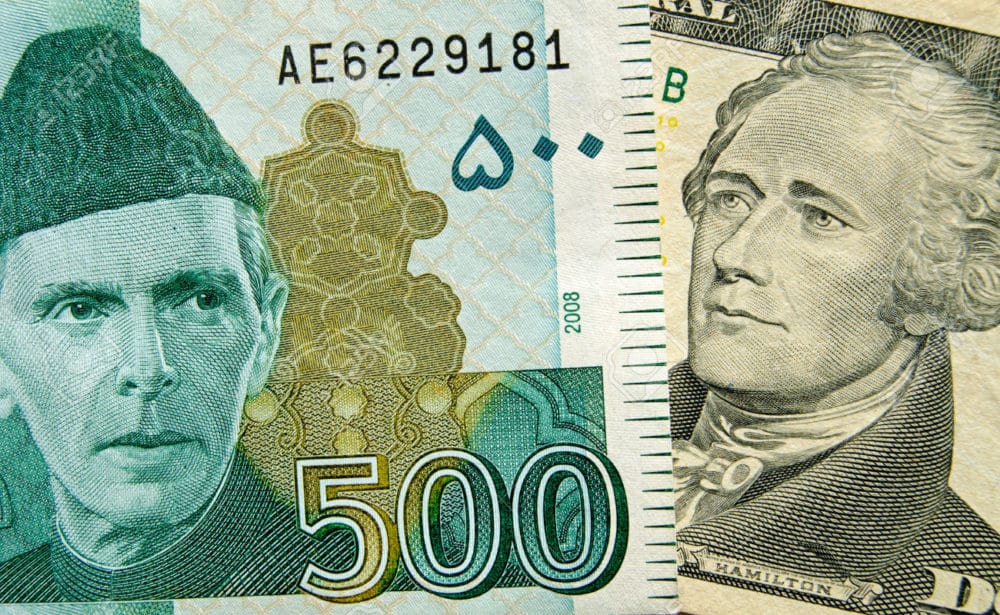PKR vs Dollar: The dilemma of falling rupee

Analysts predict the dollar to go further up before settling somewhere around Rs130.
(WebDesk) - The Pakistani rupee has experienced a worst fall ever against US dollar. Reaching at the historic level of Rupees 128.75 per dollar this week, Pakistani rupee has fallen down to almost 21% relative to the US Dollar, from December 8 to up till now.
In January, the dollar was trading at Rs110.7 against one rupee but since then it has increased 15.6%, reaching an all-time high of Rs128 on Monday due to pressures on the country’s external front.
Also Read: Dollar closes at Rs128.26
Analysts predict the dollar to go further up before settling somewhere around Rs130.
.jpg)
State bank of Pakistan referred the recent decline of rupees value as an outcome of demand and supply dynamics of foreign exchange in the bank market. Over continuous devaluation of the currency, stake holders expressed deep concern. They consider that situation can be devastating for Pakistan’s economy in the long-run.
Also Read: Election 2018: Pakistan s new rupee devaluation shows economic risk before election

The currency depreciation indicates a weakening economic situation of a country. The episodic jolts in the rate of dollar in Pakistan, signaled towards alarming economic conditions of the country. The contemporary situation has given rise to the debates of why the rupee has experienced such great fall and are the current situation of our economy really worrisome.
In the middle of currency’s depreciation period, many views are coming forth. Here’s the brief reflection on the Pakistan’s currency devaluation topic to understand the current situation.
Root of the problem
The contemporary national market conditions have especially turned the attention towards understanding the depth of the problem. The account and trade deficits which refer to increase in the outflow as compared to the inflow of national currency, are the determiner of economic situation of the country. Pakistan has been running on trade current account deficit for past years. In 2015 the trade and current account deficits were $22.16 billion and $3.12 billion respectively followed by an increase of $23.9 bn to $5.49 bn in 2016 and further it toppled to 32.48 bn and 12.49 bn in 2017. The question now arises that in the presence of increasing deficits why did the currency rate remained relatively stable. The answer to this riddle is that the currency was kept overvalued by pumping the foreign currency in the market. It was only limited to a particular time after which SBP was unable to keep up with the over-valued rate of exchange. Previously, IMF also mentioned that Pakistani rupees is about 20% over-valued.
Devaluation of the currency on purpose
Since, the last year State Bank of Pakistan has purposely carried out four rounds of currency devaluation to aid the economy in dealing with lack of foreign reservoirs and growing deficit. SBP sees this step as a remedy to address the current imbalance in the external account which would strengthen the country’s economy. Just before the election, for the consecutive fourth time Pakistan’s central bank has allowed the devaluation of the Pakistani rupees.
Devaluation – a recipe to economic stability or economic disaster?
Amidst the current currency devaluation fiasco, there are two different types of opinions which came on the scene. Economists and Pakistani analyst have been quoted saying that the current situation of national currency would not cause any panic in the market. In fact, the self-correcting mechanism of demand and supply would balance the prevailing market system. However, on the other hand some analysts have warned that the Pakistani currency is still over-valued and would continue to fall even after the election. Financial analysts are expecting that the next government would have to seek bail-out from International Monetary Funds (IMF) due to widening gap in current account deficit. This would pull Pakistan in further debt and discourage potential investment. The continued borrowing would also trigger further imbalance turning the Pakistani economy fragile.
By: Fatima Hassani

